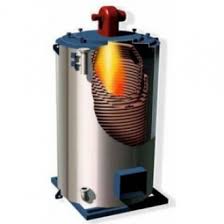
Dec . 01, 2024 15:02 Back to list
Principles and Techniques for Designing Efficient Steam Boiler Systems
Understanding Steam Boiler Design
Steam boilers are essential components in various industrial processes, where they play a crucial role in generating steam for heating, powering turbines, and driving other machinery. Understanding steam boiler design is vital for ensuring efficiency, safety, and reliability in operations. This article delves into the key principles of steam boiler design and some important considerations.
The primary function of steam boilers is to convert water into steam through the application of heat. This process involves several critical components, including the firebox, heat exchanger, burner, and various safety devices. The design of a steam boiler must ensure optimal heat transfer while minimizing energy consumption.
One of the first considerations in steam boiler design is the choice of fuel. Different fuels, such as natural gas, oil, or biomass, can be used to generate heat. The type of fuel impacts the boiler's efficiency and emissions. Modern designs often incorporate advanced burners and combustion controls to enhance efficiency and reduce harmful emissions.
Understanding Steam Boiler Design
Another critical design element is pressure and temperature control. Steam boilers operate under high pressure, and maintaining this pressure is essential for optimal performance. Safety valves, pressure gauges, and control systems are integral components of boiler design, preventing dangerous overpressure situations and ensuring safe operation.
steam boiler design pdf

Boiler materials are another consideration in design. The materials used must withstand high pressures and temperatures, as well as exposure to corrosive elements from the combustion process. Common materials include carbon steel and stainless steel, chosen for their durability and ability to withstand thermal stresses.
Efficiency is another focal point in steam boiler design. The overall efficiency of a boiler is influenced by its ability to recover waste heat. Many modern designs incorporate economizers and heat recovery systems, which capture excess heat and reuse it to preheat incoming feedwater, enhancing overall system efficiency.
Environmental considerations also play an increasingly significant role in steam boiler design. Regulatory standards are becoming stricter regarding emissions from boilers. Therefore, designs often include features such as flue gas recirculation, low-NOx burners, and advanced control systems to reduce pollutants.
Additionally, the operational flexibility of a steam boiler is essential. Many industries require varying steam demands based on production schedules. Therefore, modern designs must be adaptable, allowing for quick adjustments in output without sacrificing efficiency or safety.
In summary, steam boiler design is a complex interplay of various factors, including fuel choice, heat exchange efficiency, pressure control, material selection, and environmental considerations. As technology advances, the design of steam boilers continues to evolve, focusing on efficiency, safety, and sustainability. Understanding these principles not only helps in designing better steam boilers but also ensures that industries can safely and efficiently meet their steam generation needs. The continuous innovation in steam boiler technology heralds a future of more efficient and environmentally friendly operations, crucial for the demands of modern industry.
-
High-Efficiency Commercial Oil Fired Steam Boiler for Industry
NewsJul.30,2025
-
High-Efficiency Biomass Fired Thermal Oil Boiler Solutions
NewsJul.30,2025
-
High Efficiency Gas Fired Thermal Oil Boiler for Industrial Heating
NewsJul.29,2025
-
High-Efficiency Gas Fired Hot Water Boiler for Sale – Reliable & Affordable
NewsJul.29,2025
-
High Efficiency Biomass Fired Hot Water Boiler for Industrial and Commercial Use
NewsJul.29,2025
-
High-Efficiency Biomass Fired Hot Water Boiler for Industrial Use
NewsJul.28,2025
Related PRODUCTS






















